Living Room Guitar Amp
The 20 best guitar amps 2021: Our pick of the best combos, heads and pedalboard amps for all budgets and abilities
Included in this guide:
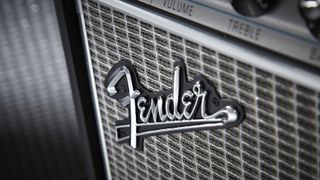
Buying an amp online
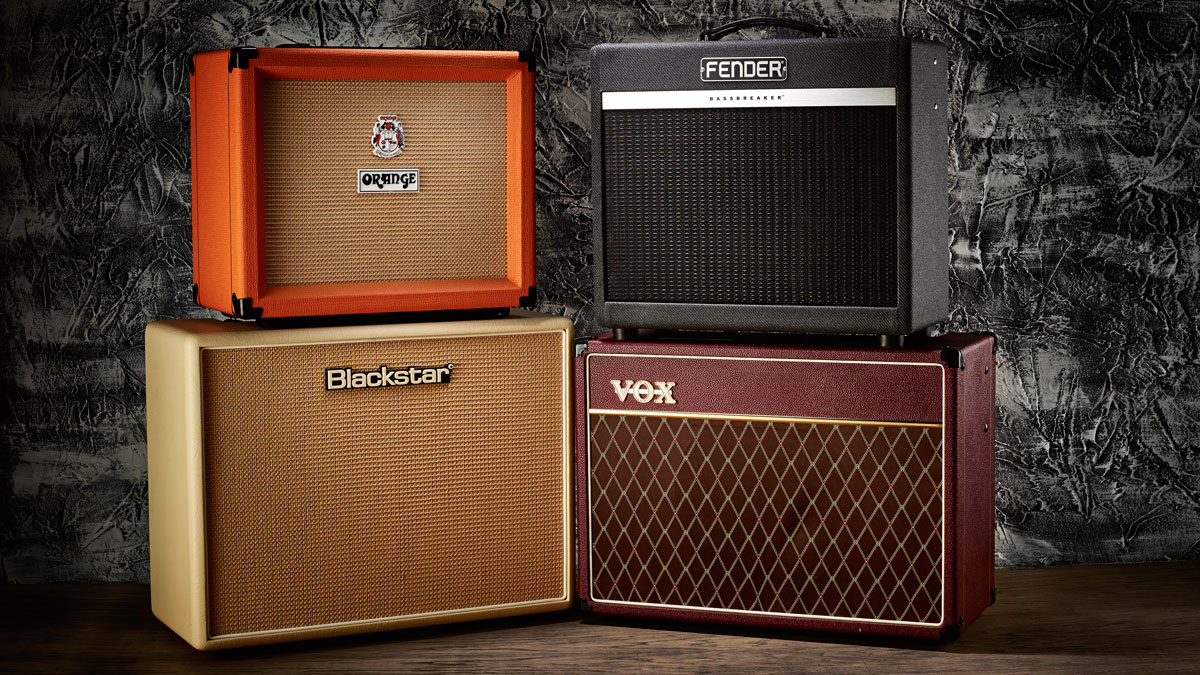
Worried about buying an amp online without playing it first? You needn't be. Online music instrument retailers like Thomann, Sweetwater and Sam Ash offer hassle-free returns as standard, so you can purchase an amp, play it in the comfort and privacy of your home and, if it's not for you, send it back with ease. Check the specific returns policy for your chosen retailer before you purchase, but most offer between 30-45 days to return an item, as long as it's in original condition.
Buying yourself one of the best guitar amps is pretty much the toughest gear decision any guitarist will make. Granted, it's also probably the most fun, but a toughie, nonetheless. Finding your next electric guitar is not easy either, but there's just something about a guitar that lets you know it's the one . An amplifier? With so much to consider it's a much harder choice to make.
Finding the right amp for your needs is crucial. Bad guitars can sound incredible through great amps, but a duff amp will make a great guitar sound totally average. An amplifier's tones and response can also really make the difference to your playing, and certain amps will definitely respond differently to certain playing styles. Our advice? If you find an amp that you get along with, don't let that thing out of your sight!
In this guide we've chosen 20 of what we think are the best guitar amps you can buy right now, listed in price order to help you choose the right amplifier for your budget. You'll find something for all styles here, for all occasions and in a variety of formats, ranging from high-powered amp heads, to combos and super-portable pedalboard options.
We've also compiled some useful buying advice where we look at some of the considerations you should make when choosing your next amp. Hit the 'buying advice' button above to head straight there, or keep scrolling to get to the products.
- These are the best budget guitar amps under $/£500
- The best guitar amps under $/£1,000: top heads and combos
Best guitar amps: Our top picks
We've actually got two top picks for best amp right now. The Fender '68 Princeton Reverb offers some of the sweetest Fender tones you'll hear. Tune in for pristine, shimmering cleans that break up nicely, with onboard spring reverb and tremolo to sweeten your tone further. It's ideal for small gigs, recording and manageable enough for the home – especially if your dirt comes via a pedal.
The Victory VC35 The Copper is a single-channel, 35-watt lunchbox head serving up a sumptuous smorgasbord of rock and blues tones – the VC35 has got the sort of performance that invokes the "B" word. With an EL84 power section and a NOS EF184 pentode the flavour is very much British, with that winsome musical chime that calls to mind vintage Vox amps. Lovely stuff.
Best guitar amps: Under $/£500
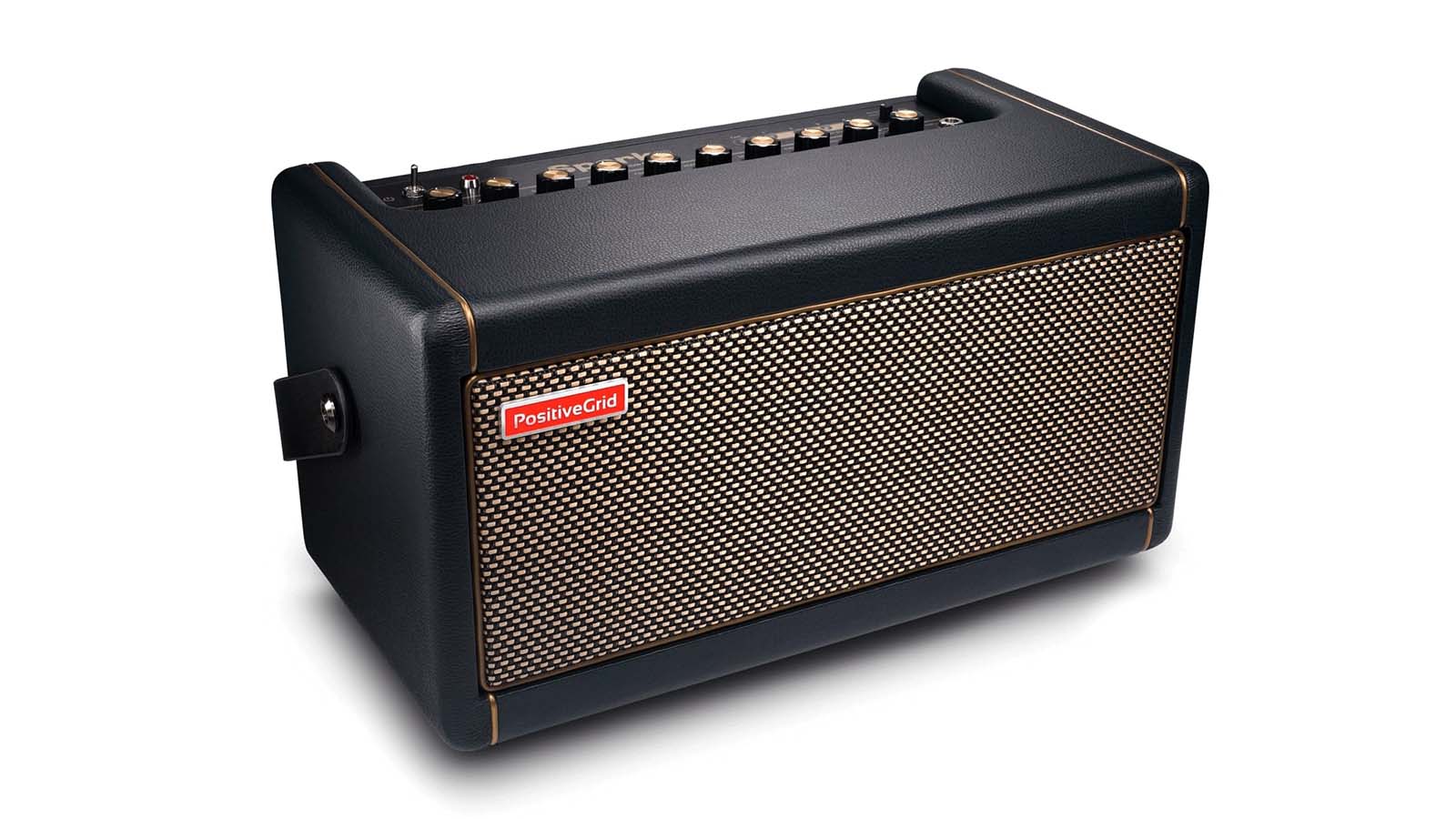
The ultimate smart guitar amplifier
Specifications
Price: $299
Type: Modelling desktop amp
Output: 40W
Valves: N/A
Number of channels: 30 Amp Models
Speaker: 2x4" custom designed
Weight: 5.2kg
Key Features: BIAS Tone Engine and app integration for jamming, 40 effects, headphones out, Bluetooth, USB, four programmable presets, tuner, Auto Chord, Smart Jam
Reasons to buy
+Packed with features +Comprehensive range of tones +Smart Jam and Auto Chord features are invaluable for practice and learning
Reasons to avoid
-Waiting times on orders can vary
Where to start with the Spark 40? Well, it just stops short of cooking your dinner, but it has most other essential functions covered – and a few more besides. Its core centres around Positive Grid's BIAS Tone Engine modelling tech, which allows it to put together a formidable collection of amp models and cover all bases tone-wise.
Altogether are 30 amp models to choose from, and 40 effects, so it's punching big numbers already in the context of desktop amp functionality, but with the accompanying app, the Spark offers a transformative experience. It may well change how you think about guitar amplification.
The Spark's Smart Jam feature allows you to play some chords or a riff and the amp will generate a backing track for you to play to. Who needs friends? Auto Chord allows you to stream music from your mobile device to the Spark and it will transpose the chords so you can play along. As a learning and practice tool, it doesn't get much better.
There are outputs for recording and silent practice. Sure, it's 100 percent digital, but it feels analogue, and crucially it sounds great at low volumes. When you crank the Spark, its dual 4" speaker setup fills the room with a sound that has no right to be so three-dimensional.
Early adopters of the Spark have experienced some shipping delays, but things appear to be improving rapidly. Check here for the latest updates on shipping times.
Read the full Positive Grid Spark 40 review
- Indulge in analog with the best tube amps
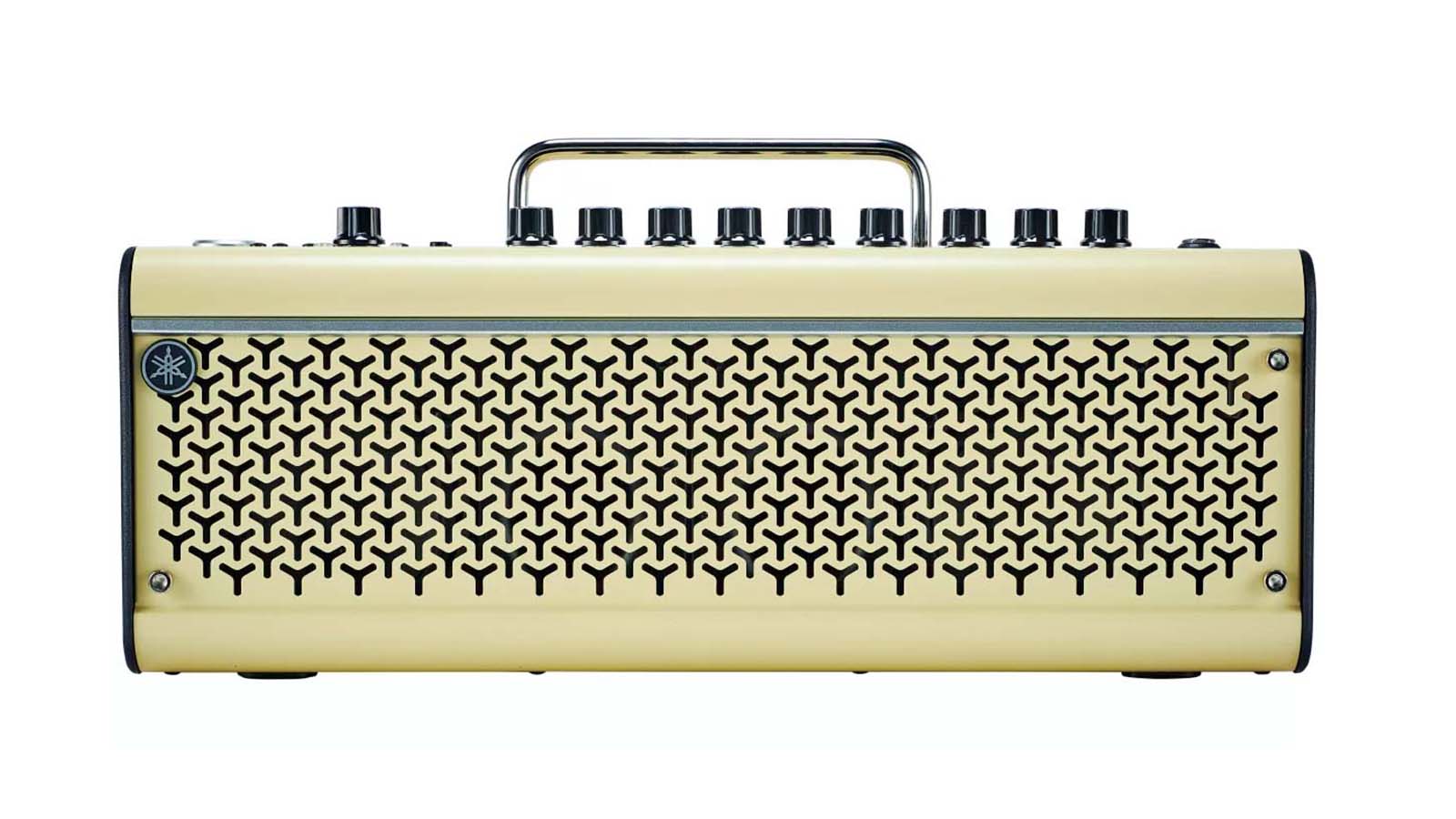
2. Yamaha THR30 II Wireless
A fully wireless desktop amp that you can take anywhere
Specifications
Price: $499/£399/€479
Type: Battery-powered desktop combo
Output: 30W (2x 15W stereo, 15W battery)
Valves: N/A
Number of channels: 15 Amp Model Combinations, Acoustic Mic Models, Bass Amps, Flat Voicings
Speaker: 2x 3.5
Weight: 4.3kg
Key Features: 15V DC power supply / internal rechargeable battery, headphones output, USB, 2x 1/4" line out, spring and hall reverbs, effects (chorus, flanger, phaser, tremolo, echo, compressor, noise gate), THR Remote App, bundled Cubase AI, full wireless capability
Reasons to buy
+Take it anywhere! +Ideal for practice and home recording +Easy to operate
Reasons to avoid
-The plastic backing is lightweight but not very "guitar amp"
Yamaha's THR series remains groundbreaking. It looked to dress the guitar amplifier in home audio stylings, pack it with digital functionality that – crucially – was rooted in the feel and response of valve amplifiers, and make it portable.
Well, amps don't get much more portable than the THR30 II Wireless. It can be operated via the 15V DC power supply, or, alternatively, charge it up and take it out with you to enjoy 15 watts of stereo solid-state power in the park, by the beach, on top of a skyscraper a la U2. Whatever you like.
It is bundled with Cubase AI, has a very respectable complement of onboard effects, and with headphones and USB outputs it is a sound option for home recording and late-night practice sessions. It also looks so good you could leave it in the living room without getting a ticking off.
Read the full Yamaha THR30 II review
- Check out some killer space-savers: the best small guitar amps
- Loud and clear: explore the best acoustic guitar amps
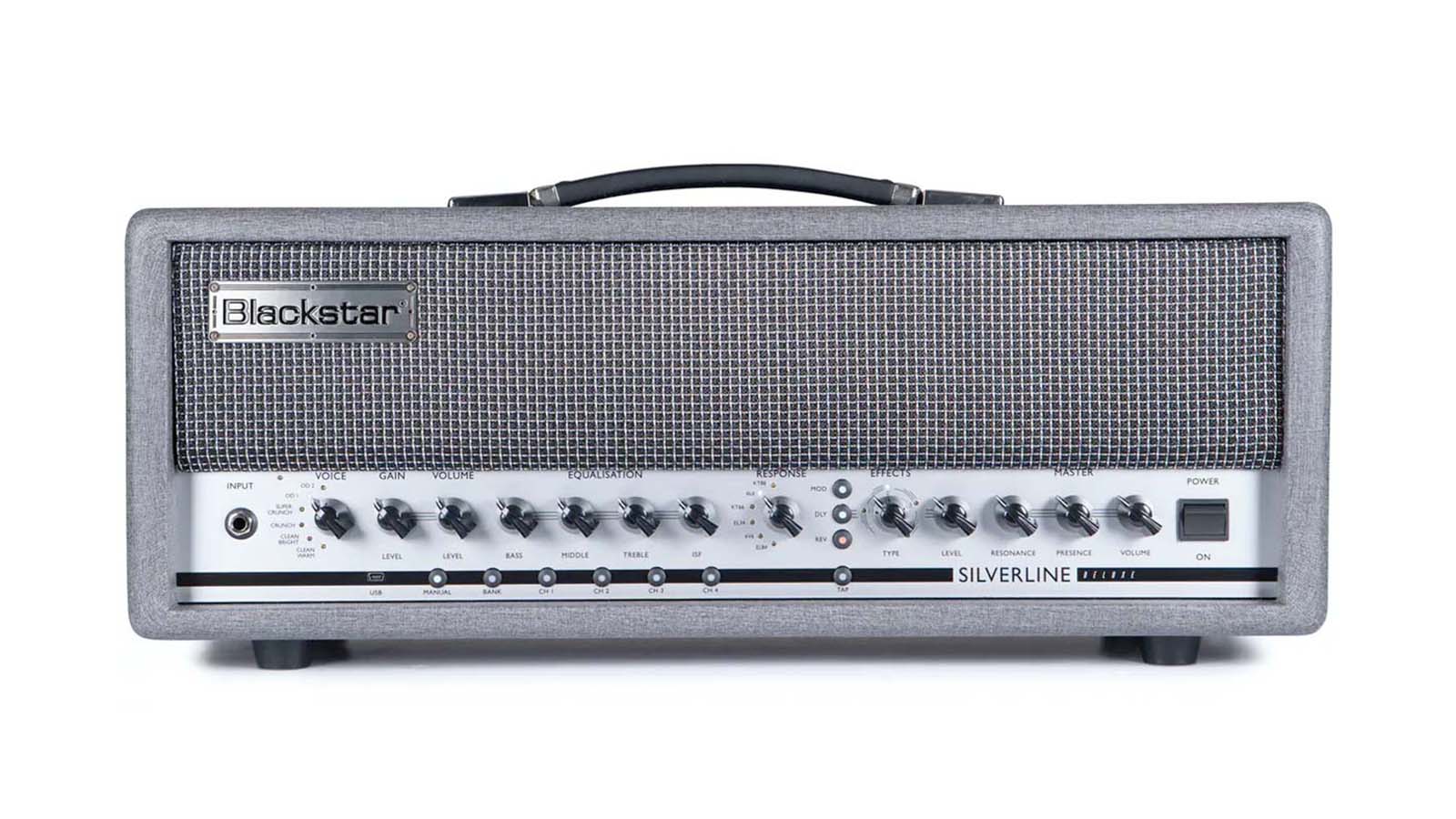
A boutique take on digital modelling amp tech
Specifications
Price: $529/£418/€499
Type: Digital modelling head
Output: 100W at 4ohms
Valves: N/A
Number of channels: 6 fully-programmable voices, 12 onboard memory slots
Speaker: N/A
Weight: 9.6kg
Key Features: Patented TVP output stage emulation, patented ISF EQ shift, built-in tuner, USB for direct recording remote control and firmware updates via Insider software app. Emulated headphones/recording out and mp3/line in (can be switched to effects loop send/return using Insider software), MIDI in, Matching 2x12" cab
Reasons to buy
+Great set of features +Lightweight and classy build +Excellent options across the range +Well laid-out front panel
Reasons to avoid
-Alternatives offer more effects options
When Blackstar launched its Silverline series, it was as though digital modelling amplifiers had grown up, bought their first suit and got a real job. The "B" word was invoked, and with good reason, because the grey-silver on grey designs, the feature-set, the seriousness, make everyone stop for a minute and consider their options.
With the Silverline, there are many. If you like the idea of the Silverline but aren't looking for a head, the range also includes the 20W Standard 1x10", the 50W Special 1x12", the 100W Deluxe 1x12", and the 2x100W Stereo Deluxe 2x12" combos.
The setup and look on each is similar, with Blackstar's SHARC processing tech under the hood to keep the tones legit. There are effects, programmable settings, and TVP tech allowing you to select the power-tube emulation you prefer. They look and sound like real valve amps, but have all the mod cons that tomorrow's player needs today. Credible, convincing, state-of-the-art.
Read the full Blackstar Silverline Deluxe review
Best guitar amps: $/£501 - $/£1,000
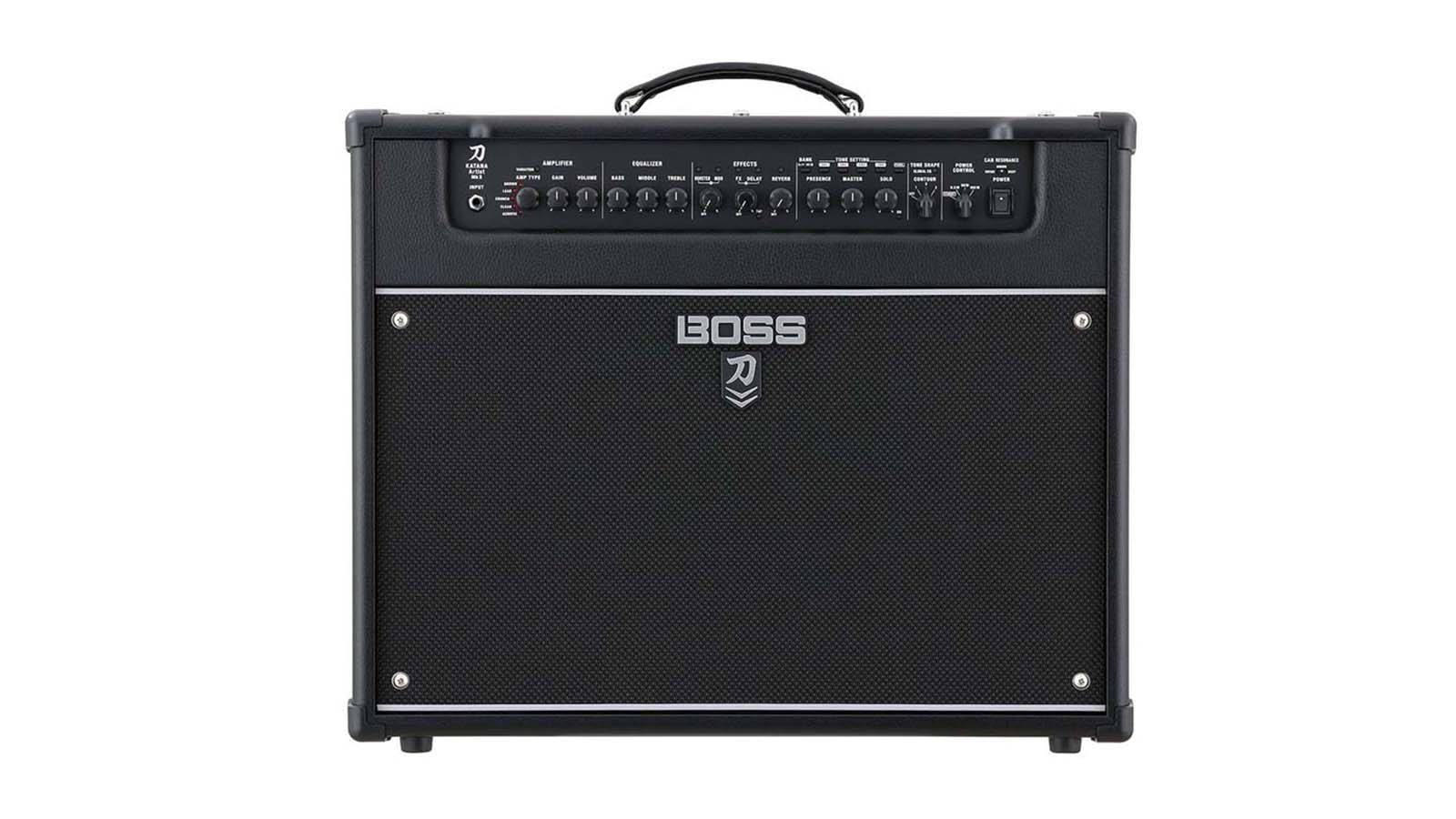
A fully-featured digital modelling combo amp
Specifications
Price: $479/£555/€649
Type: Modelling combo
Output: 100W switchable to 50W or 0.5W
Valves: N/A
Number of channels: 5 amp types w/two modes each
Speaker: 1x 12" Custom Waza Speaker
Weight: 23.6kg
Key Features: 3x digital reverbs 5x Simultaneous Effects (Delay,Tremolo, Flanger, Pitch Shift, Phaser, Wah), mic'd cab emulation, over 60 effects downloadable via Boss Tone Studio, Series/Parallel Effects Loop, MIDI in, USB, headphones output
Reasons to buy
+Superb suite of contemporary features +Goes from super-clean to high-gain +Onboard effects are excellent
Reasons to avoid
-A little more expensive than its MkII Katana kin
The Katana series has been a front-to-back triumph for Boss, packing a handful of amp models into small formats, loading them up with onboard effects and a heap of contemporary features and making them available at an accessible price.
This Artist MkII combo is the flagship model, and while we'd happily endorse any of the Katana MkII amps, the additional MIDI functionality and an upgraded Waza Craft speaker is a big selling point.
For a digital amplifier, the front panel is reassuringly familiar. Think of it as a five-channel amplifier, with five amp modes, but with two modes on each model it expands your tone options dramatically. This will do bell-like cleans, searing high-gain chug, and all in between, and with Boss's Tube Logic architecture, it all feels and sounds convincing. The onboard effects are top-grade and you can get more online via the Tone Studio library. There's a rabbit hole to fall into, but chasing usable tones is a breeze.
Read the full Boss Katana Artist MkII 1x12" review

The best low-price combo for all-valve blues tones
Specifications
Price: $599/£469/€659
Type: Valve combo
Output: 15W
Valves: 3x 12AX7 preamp valves, 2x EL84 power amp valves
Number of channels: 1
Speaker: 12" Celestion A-Type
Weight: 14.3kg
Key Features: Op-amp-driven spring reverb, Fat switch
Reasons to buy
+Ace clean tones and hot sizzling drive +Fat switch thickens up single-coils nicely
Reasons to avoid
-Lacks clean headroom when playing with a drummer
There is a reason why the Blues Junior tops the best-seller charts for valve-amp combos. Its USP is putting classic Fender tones into a super-affordable package that's portable, fuss-free and is tooled for our present moment where we want great tube tones at low volumes and pedalboard compatibility.
But even before you bring your 'board into play, the tight low-end and sparkling high-end of the Blues Junior will put a spell on you. The FAT switch is an act of modest genius, doing exactly what you'd imagine it would, widening the frequencies and adding a beer gut to your single-coil tone.
The FAT switch is really the only thing you'll find on the control panel that requires explanation, otherwise the Blues Junior is just a straight-up, fuss-free combo, and, dare we say it, a modern classic. Drive it hard and you'll enter blues-rock nirvana.
Read the full Fender Blues Junior IV review
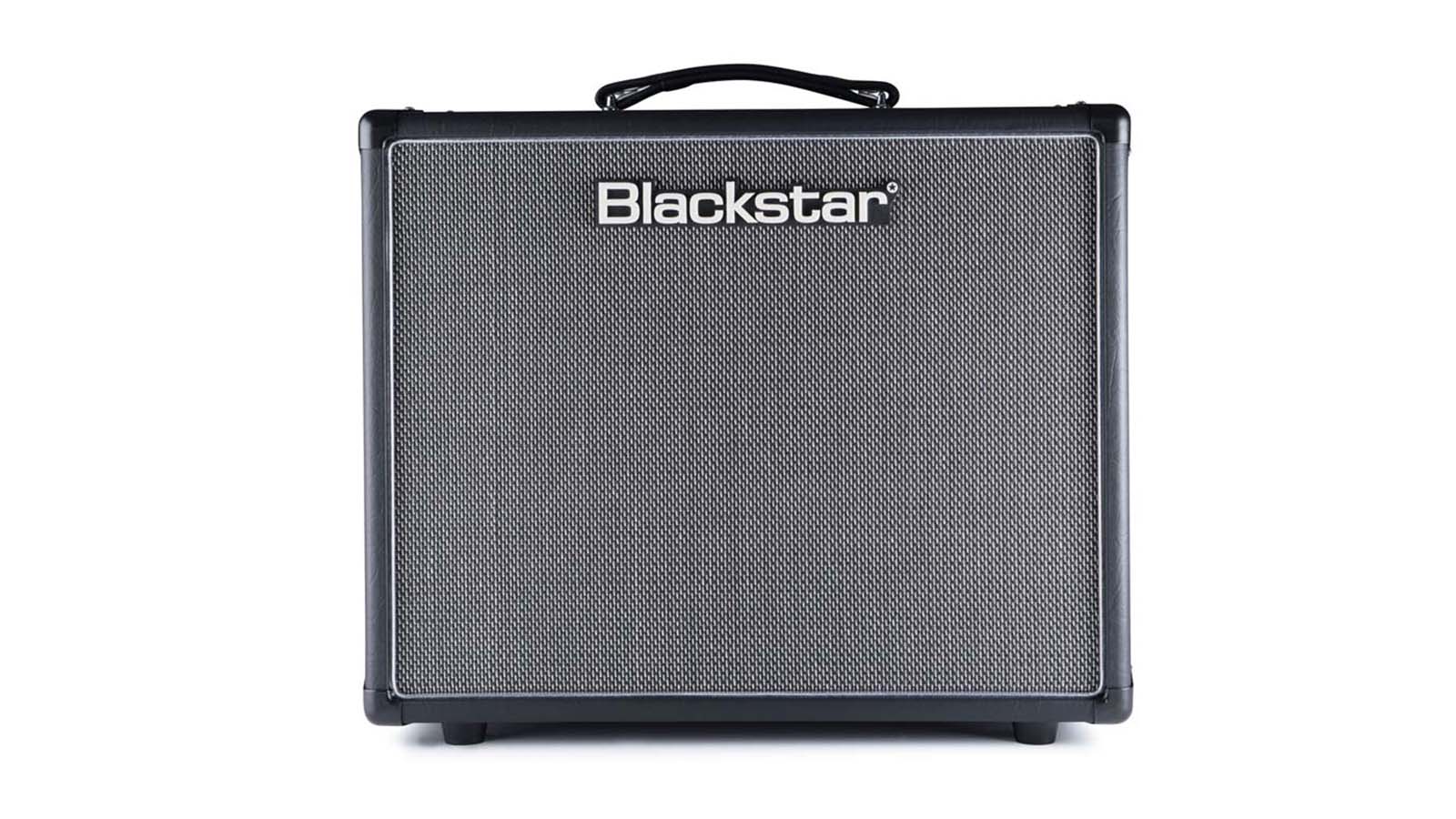
6. Blackstar HT-20R MkII
A flawless, feature-stacked combo at an accessible price
Specifications
Price: $679/£595/€729
Type: Valve combo
Output: 20W (switchable to 2W)
Valves: 2x ECC83 preamp valves, 2x EL84 power amp valves
Number of channels: 2
Speaker: 1x 12"
Weight: 16.2kg
Key Features: 2-button footswitch, reverb, XLR DI out, USB out
Reasons to buy
+Impossible to fault at this price +Footswitchable overdrive voicings +Digital reverb is excellent +A fine tone range, from clean to high-gain
Reasons to avoid
-None at the price
Offering plenty of change from a grand, Blackstar's HR-20R MkII is a mid-priced valve combo that does a very good impression of an amp retailing at two or three times the price. It is a two-channel amp with footswitchable overdrive voicings, and an uncanny ability to play the field tonally.
The clean channel is a simple affair with a solitary tone control and a volume, with modes for scooped US tone – think Fender et al – and a quintessentially British mode with tight mids and treble chime.
You could get lost in the cleans, adding a splash of reworked digital reverb that now sounds studio-quality. But don't forget you've got an overdrive channel with Classic and High Gain voicings that will take you from classic '70s rock crunch through to contemporary metal. And all this from one package. It's loud enough for the stage but you can power down to 2 watts for bedroom shredding. It's a remarkable feat of amp building.
Read the full Blackstar HT-20R MkII review
- Get your gain on with the best metal amps
- Take a look at some of the best gifts for guitarists

A truly game-changing pedalboard amp
Specifications
Price: $799/£669/€633
Type: Pedalboard amp
Output: 100W switchable to 5W
Valves: Sub-miniature Russian twin triode
Number of channels: 4
Speaker: N/A
Weight: 1.2kg
Key Features: Nanotube tech, digital reverb, effects loop, MIDI in, footswitch input (Remote1 footswitch sold separately), speaker-emulated line-out
Reasons to buy
+Portable, powerful and versatile +Four-channel setup offers heaps of options +Next-level digital spring reverb
Reasons to avoid
-Remote1 MIDI footswitch is pricey
Like the best innovations in guitar technology, the Thomas Blug's Amp1 keeps all the clever stuff hidden from sight, allowing players to concentrate on what is frankly difficult enough – playing the guitar.
But the Amp1 really is clever. It's the size of a multi-delay unit, you can throw it in a bag and take it wherever, and yet offers you four channels, 100W of Class D power, with some analogue mojo fairy dust by way of a sub-miniature Russian twin triode.
Simply select which channel you want – Clean, Vintage, Classic, Modern – and dial in your tone via the 3-band EQ and volume, master and gain controls. It's just like a real amp, and that's the point – it is. This is the shape of amps to come.
Partner it with the Remote1 footswitch you can access all four channels, boost and reverb via MIDI, plus add an ancillary master volume and adjustable power soak. You can save your settings down and use them as you might in a pedalboard. This is a futuristic amp for those squeamish about apps, software and digital sterility.
Read the full BluGuitar Amp1 Mercury Edition review
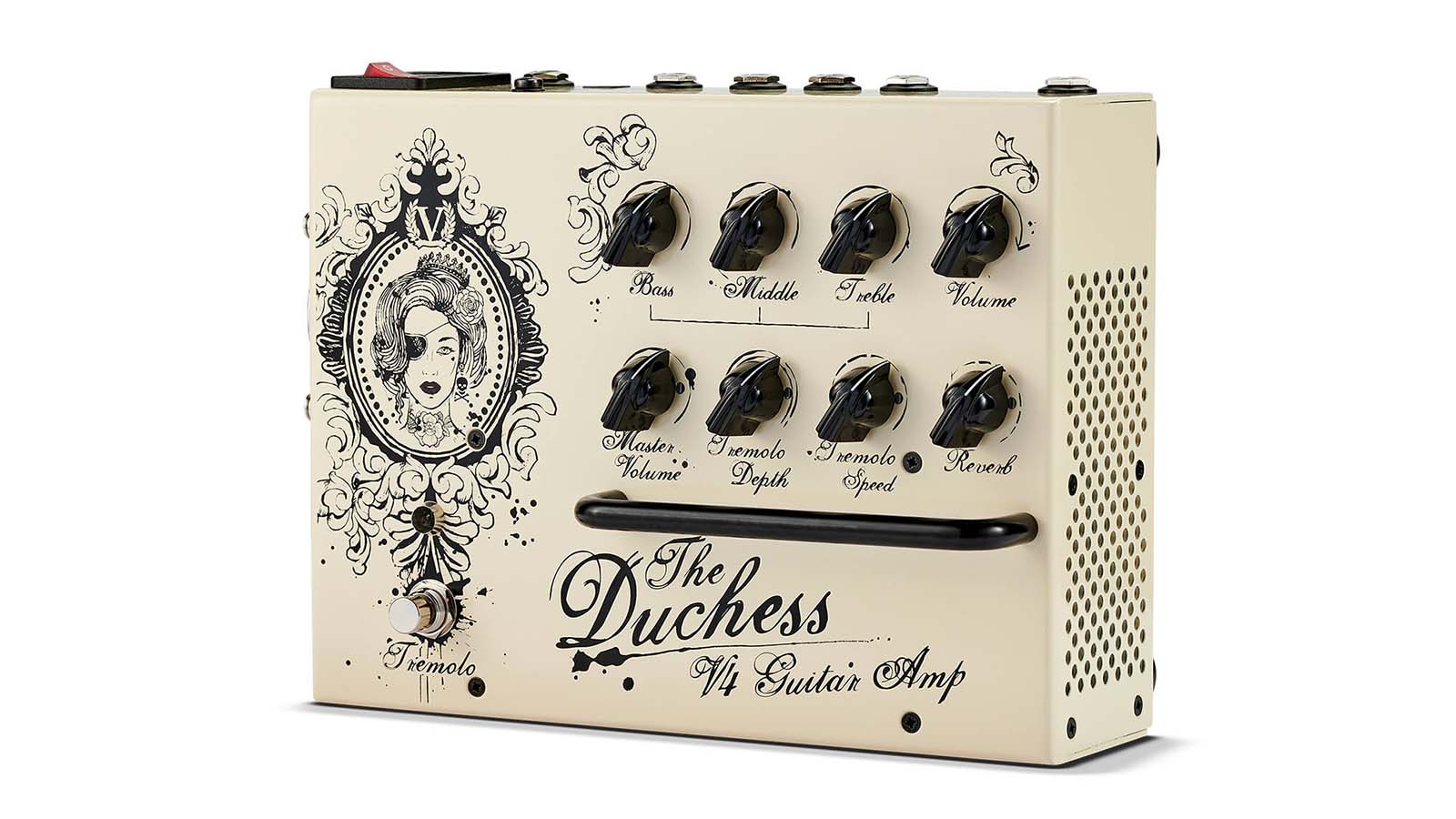
Super-sweet low-gain boutique tones with heaps of power
Specifications
Price: $799/£699/€839
Type: Pedalboard amp with Class D power stage and valve-driven preamp
Output: 180W at 4ohms
Valves: 1 x EC900, 3 x CV4014 preamp
Number of channels: 1
Speaker: N/A
Weight: 1.6kg
Key Features: Digital reverb, tremolo, series effects loop, balanced line out, DC power outlet
Reasons to buy
+Super-portable +Abundant headroom and sparkling cleans +Very musical reverb and tremolo
Reasons to avoid
-Fan is always-on, making recording tricky
The Duchess Pedal Amp assumes a similar form to Victory's V4 series of pedal preamps, but it's a fully functioning amplifier with a whopping Class D power stage that delivers 180 watts at 4 ohms, and a truly lush valve-driven preamp that makes damn sure you don't mistake this as just some kind of practical option for the gigging musician.
Sure, it is practical, but it is the tones that will have the hair on the back of your neck standing to attention. Specifically, clean tones, and with a boutique low-gain tone profile like that, it should come as no surprise that the Duchess just loves overdrive pedals.
The enclosure is super-tough, powder-coated steel, with its complement of chickenhead knobs protected by a raised steel kick bar. A single footswitch turns the tremolo on and off. For itinerant players, this could be the ultimate amp.
Read the full Victory V4 The Duchess review

9. Fender '68 Custom Princeton Reverb
The best all-valve combo you can buy
Specifications
Price: $899/£969/€1,179
Type: Valve combo
Output: 12W
Valves: 3x 12AX7, 1x 12AT7, 2x 6v6, 1x 5AR4
Number of channels: 1
Speaker: 10" Celestion
Weight: 15.7kg
Key Features: Dual inputs, tremolo, valve-driven reverb
Reasons to buy
+Loud enough for small gigs +Sparkling cleans, hot sizzling drive +Heavenly spring reverb and lush tremolo +Takes pedals well
Reasons to avoid
-Look elsewhere for high-gain
The Fender Princeton Reverb has long been considered the Goldilocks option for those looking for an all-valve combo with manageable volume, but one that's loud enough for small shows.
There is a reasonable amount of headroom on offer, with its bell-like cleans mother's milk to blues and country players, and as you crank up the volume you'll find a gritty breakup that's warm, musical and addictive.
This '68 reissue comes with the silver-panel and aluminium grille cloth trim. Under the hood it has been tweaked by Fender so it will take pedals better, with negative feedback reduced to enhance its response and bring on overdrive that little bit quicker. Under the hood you'll find hand-wired valve sockets and custom-made Schumacher transformers. The tube-driven reverb and tremolo is divine.
Read our full Fender '68 Custom Princeton Reverb review
- Best bass amps: top choice amplification for bassists
- If money's no object check out the best high-end guitar amps
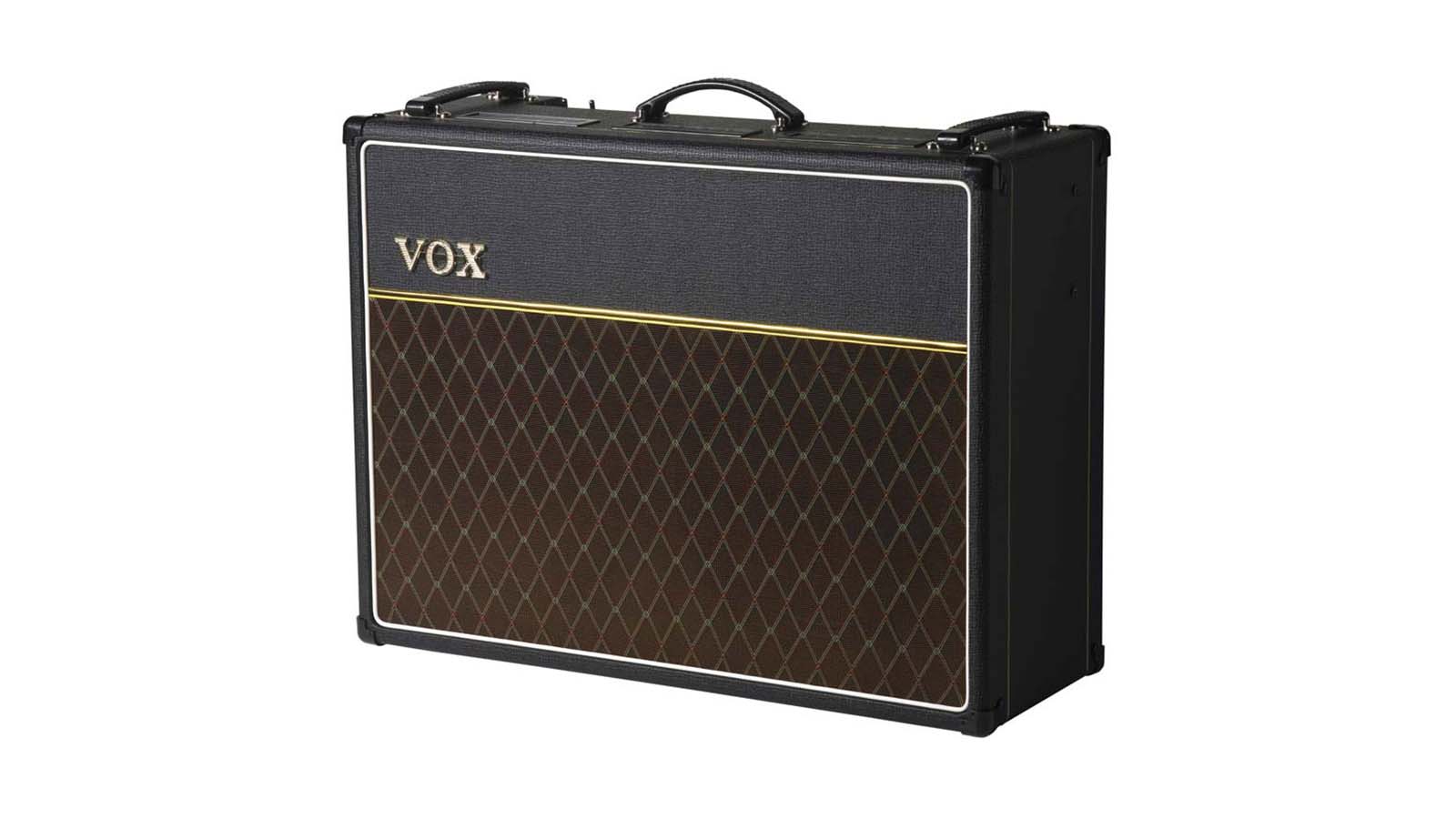
A classic British combo in 2x12 format
Specifications
Price: $899/£658/€799
Type: 2x12 tube combo
Output: 15W
Tubes: 2x EL84, 3x 12AX7
Number of channels: 2 (not footswitchable)
Speaker: 2x Celestion G12M Greenback 12"
Weight: 30.2kg
Reasons to buy
+Usable volume +Classic tones +Responds well to pedals
Reasons to avoid
-May not be enough headroom for totally clean players
The new-ish AC15 'Twin' retains the all-important dual-EL84, cathode-biased output section of its forebear, but otherwise it's very different. A quick scan across the top panel reveals two inputs for independent access to either normal or top boost channels.
One benefit of the bigger, 2x12 enclosure is that it provides ample room for a full-length reverb tank, housed in the bottom. There's also an in-built tremolo effect, with controls for depth and speed.
But the whole point of this amp is the pair of 25-watt Celestion G12M Greenback speakers. They are the speaker of rock in so many cases and while purists might hope for Celestion Blues, they would add a fair amount to the price; and the increased power handling of two Greenbacks on the end of just 15 watts is quite a tantalising prospect.
It's fair to say that even with the master volume set-up, the magic doesn't really start happening until the amp's lungs are at least half way open, but happily, that's not far from perfect for many of today's pub and bar gigs – it may even be too much for some.
Read the full Vox AC15C2 review
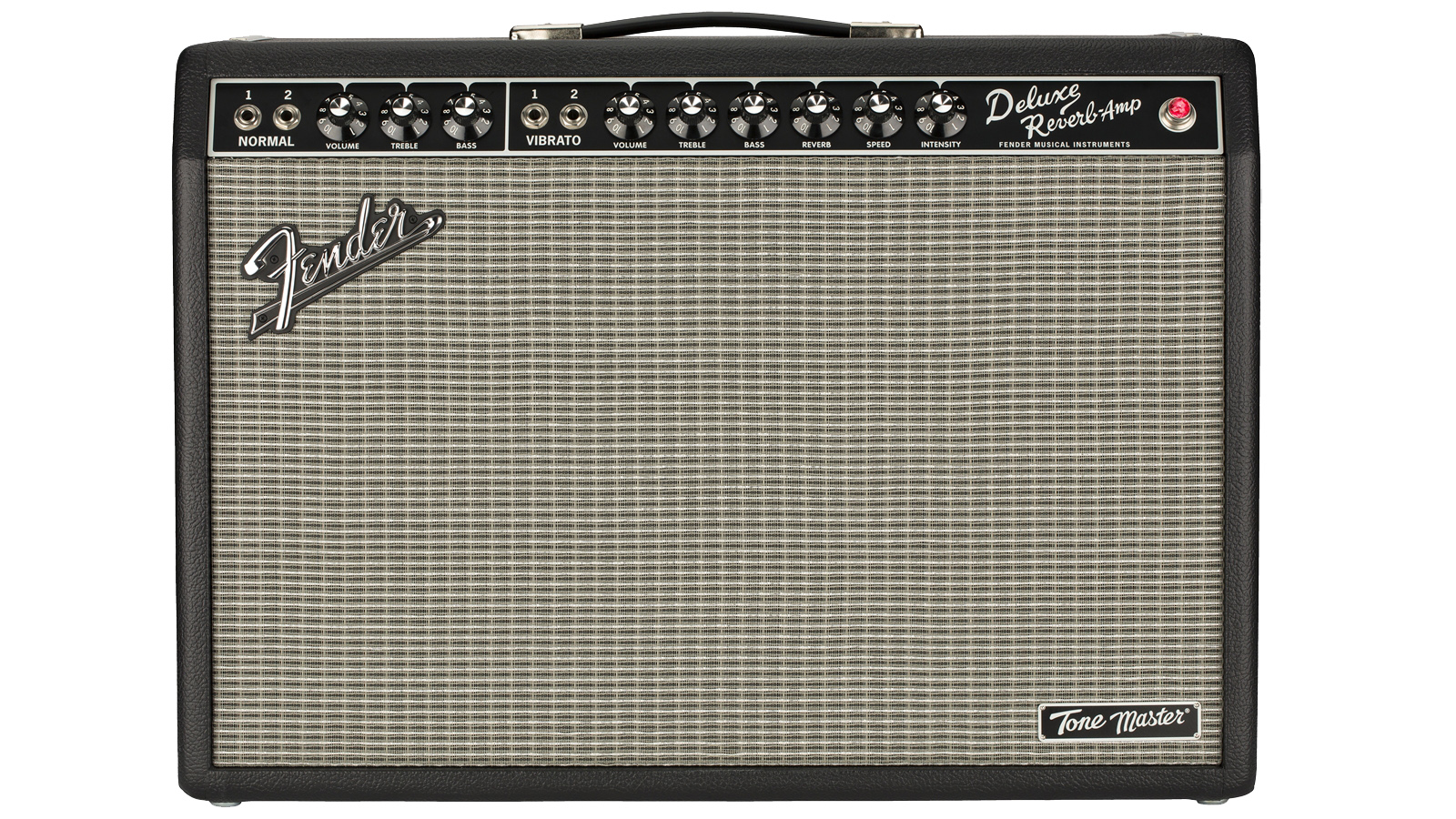
11. Fender Tonemaster Deluxe Reverb
Analogue tone for the digital age
Specifications
Price: $899/£859/€955
Type: Digital
Output: 100W (emulates 22 valve watts)
Valves: N/A
Number of channels: 2
Speaker: 1x12" Jensen N-12K Neo
Weight: 10.4kg
Reasons to buy
+Half the weight of a regular Deluxe +Crazy processing power +Firmware updates allow you to essentially mod your amp
Reasons to avoid
-It's not a valve amp
The Tonemaster series has been the centre of an interesting turn of events for Fender. Reissuing their iconic Deluxe and Twin Reverbs was only ever going to be a welcomed move, but (and some of you may need to sit down for this) taking out the valves has definitely split opinion. But hey, dry your eyes champ - because this Deluxe sounds just as good as any valve-ified version.
Relying on it's massive digital processing power to emulate the tone of an all-valve Deluxe, it absolutely holds its own. The sparkle and clarity we've come to expect from Fender amps is all there, thanks in part to the 12" Jensen N-12K speaker amd the resonant same-as-the-original pine cabinet.
As the Tonemaster is designed to replicate valve-esque breakup response, Fender has also included an in-built attenuator for those times when you need to bring it down a notch. The rear panel also contains a balanced line out with cab simulations, making this Deluxe great for silent recording or smaller gigs where mic'ing amps isn't possible. Oh, and it's half the weight of it's all-valve predecessor. Fender has nailed it here, if we do say so ourselves.
Best guitar amps: $/£1,001 - $/£1,500

12. Roland JC-120
The king of clean
Specifications
Price: $1,099/£1,229/€1,400
Type: Solid State
Output: 120W
Valves: N/A
Number of channels: 2
Speaker: 2x Classic silver-cone
Weight: 28kg
Reasons to buy
+The clean tone to end all clean tones +A true stereo chorus to die for +An iconic amp
Reasons to avoid
-Onboard distortion nothing to write home about
Since its release in 1975, the JC-120 has been on countless era-defining records. Andy Summers, Johnny Marr and Robert Smith have all been religious users of the Jazz Chorus line, in turn making it one of the most iconic solid state options of the last 45 years.
The JC-120 is named so due to the lush onboard stereo chorus effect that has made it so desirable. This is down to the fact that the JC-120 essentially has 2 60w amps inside of it - one for each speaker - allowing for 'true' stereo rather than an approximation. In 'true' stereo, the JC-120's immersive chorus provides an almost other-worldly playing experience.
It's an ideal pedal platform, too. With transparency and preservation of tone being key features of the JC-120, you'll have no problems crafting your tone with additional pedals or other hardware. If you like to use overdrive or distortion, a pedal is almost a necessity with this amp - but you're not buying an amp with 'Jazz' in the name for its gurn-inducing gain, are you?
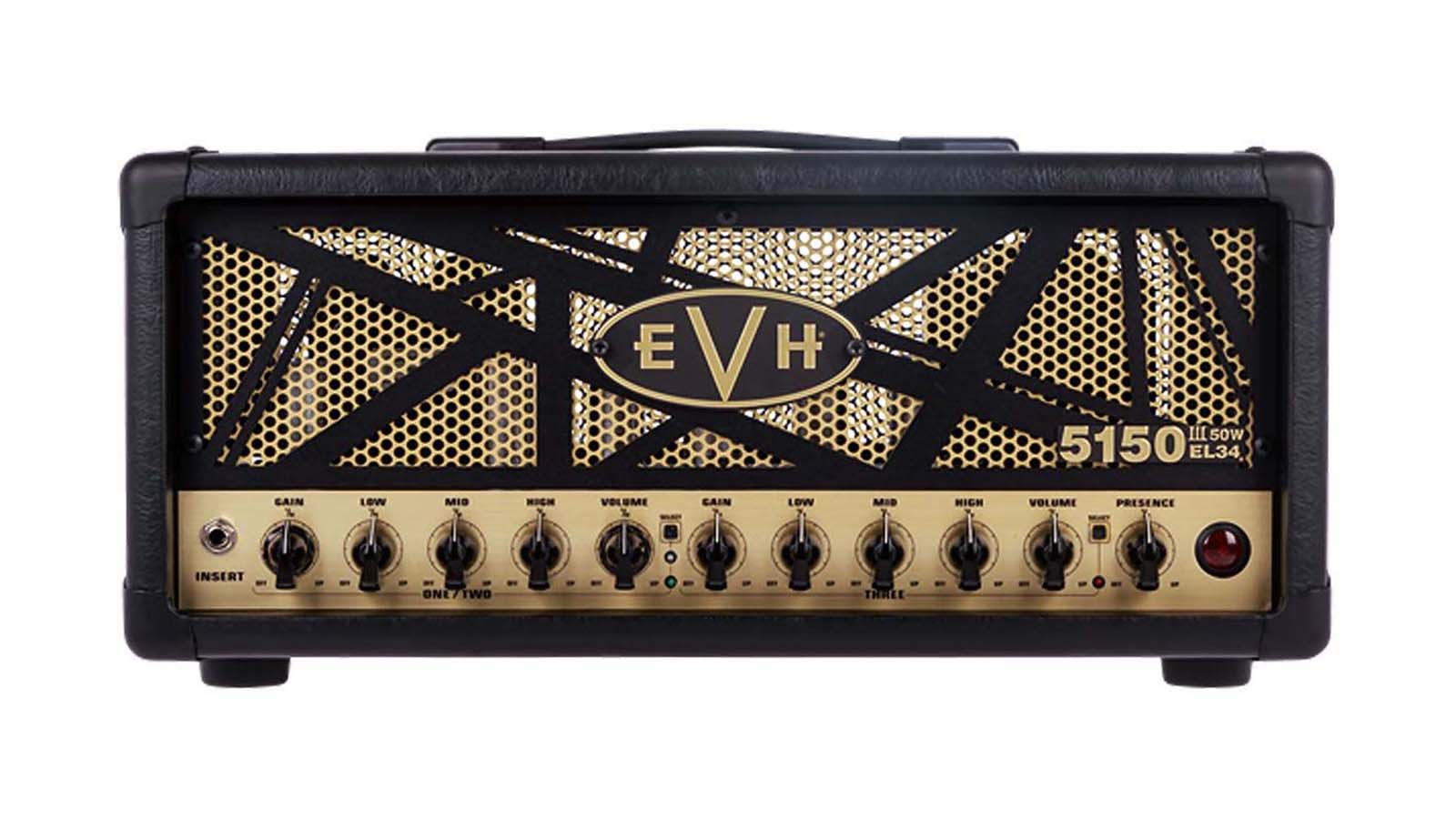
The best valve head for hard rock and metal
Specifications
Price: $1,299/£999/€1,990
Type: Valve head
Output: 50W at 4ohms
Valves: 8x JJ ECC83 preamp valves, 4x JJ EL34 power amp valves
Number of channels: 3
Speaker: N/A (matching 2x12 cab £479)
Weight: 15.9kg
Key Features: Series effects loop, headphones out, preamp out, MIDI input, external bias adjustment, Resonance control for cab matching
Reasons to buy
+A compact powerhouse with gain to burn +Exceptional harmonic and dynamic detail +MIDI switchable channels and effects loop
Reasons to avoid
-A lot of volume for domestic use
Sometimes you have to split the atom with a saturated level of gain that would violate health and safety in pretty much all other contexts, and that's an occasion where you'd hope to find the EVH 5150III on the backline.
This amp bears Edward Van Halen's initials on the front, so take it as read that you can access that harmonically volatile weekend rock tone, but dime the lead channel and you'll have all the gain you need for contemporary metal too.
And yet, there's subtlety and complexity to be found here – even at the extremes. The 5150III's gain is rich in harmonics. It is dynamic, and with the EL34 power tubes it takes on the tonal character of a hyper-trophied Marshall Plexi. This is guitar tone as spectacle, a roman candle of overdrive with a very usable clean channel.
Read the full EVH 5150III 50W EL34 review
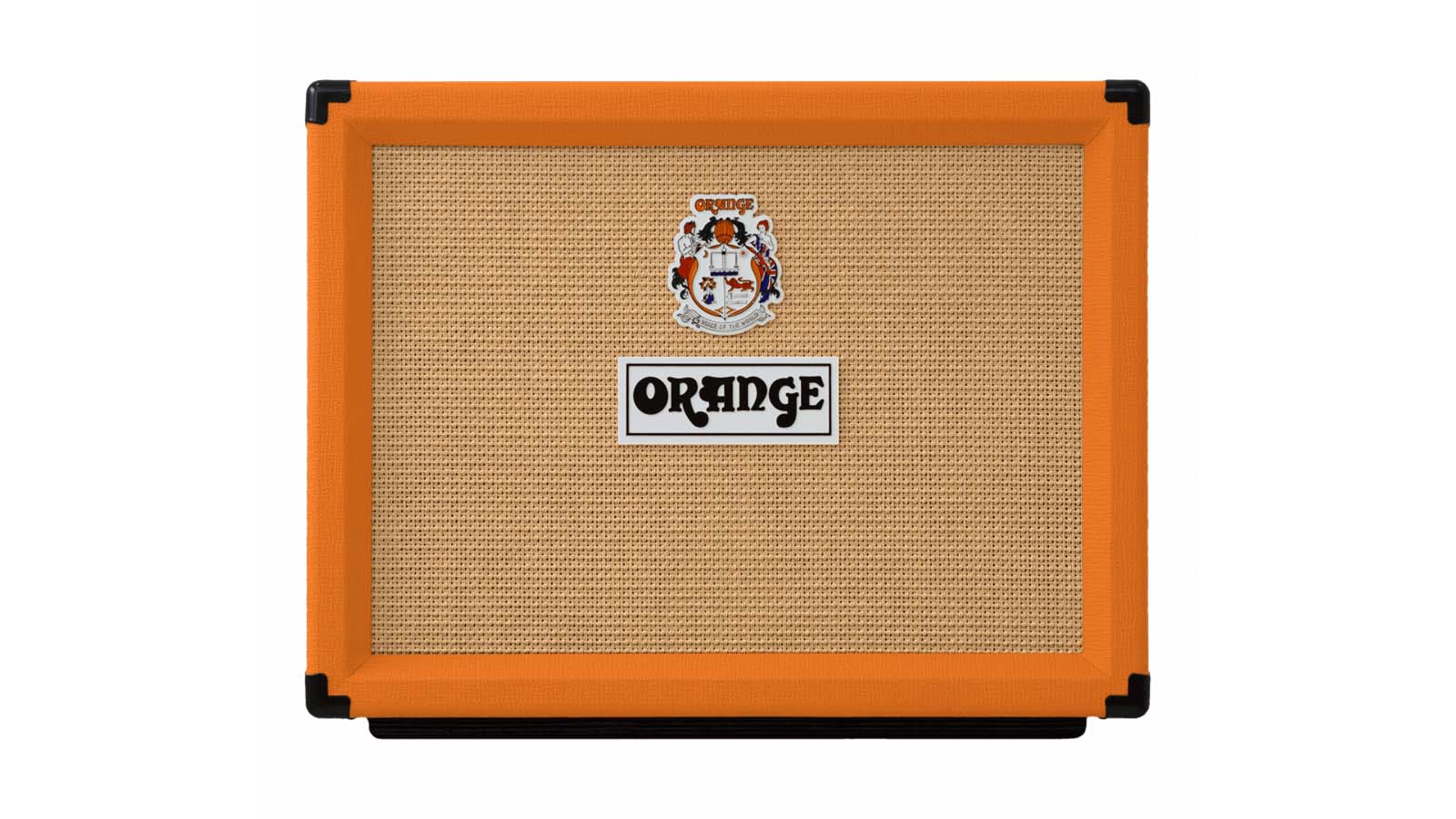
A killer combo for pedal users – especially stereo fans
Specifications
Price: $1,099/£811/€1,045
Type: Stereo tube combo
Output: 30W, switchable down to 15W
Number of channels: 2
Tubes: 4x EL84, 4x ECC83, 2x ECC81
Speaker: 2x Orange Voice Of The World Gold Label 10"
Weight: 23.3kg
Reasons to buy
+True stereo capability +Great for pedal users +Deceptively versatile
Reasons to avoid
-Could do with side handles for portability
The Rocker 32's secret weapon is its stereo capabilities courtesy of two output stages and a mono out/stereo in valve-buffered effects loop – and it's this that opens the door to some tantalising effects possibilities. It also features a half-power option incorporated into the front panel standby switch.
The enamel control panel follows Orange's classic 1970s 'graphics only' format, using pictograms to describe the control functions. The Dirty channel includes gain, bass, mid, treble and master volume controls, while the clean Natural channel has a single volume control. The Natural channel may only have a single volume control, but it's perfectly dialled in to flatter practically any guitar and it sounds wonderful, with a glassy treble giving way to an addictive chime at higher volume levels.
The Dirty channel's gain control has a very wide range, allowing fine control of moderately driven sounds, with plenty of Dark Terror-approved filth at the top of its travel, making it ideal for everything from classic Brit rock and blues to modern metal.
Read the full Orange Rocker 32 review
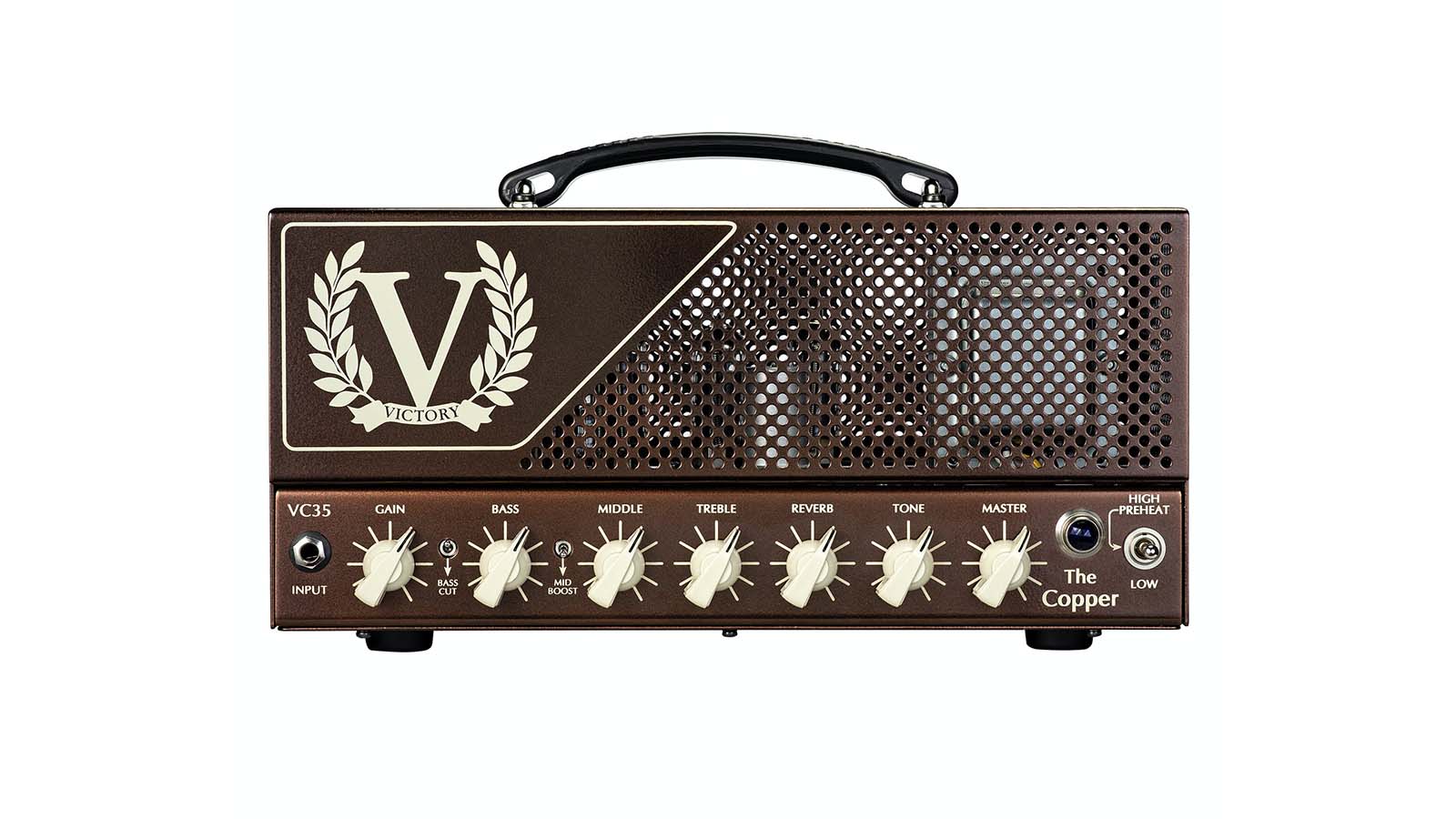
One of the best guitar amps for British valve tone
Specifications
Price: $1,399/£1,129/€1,189
Type: Lunchbox valve head
Output: 35W switchable to 17W
Valves: 2x 12AX7, 1x EF184, 4x EL84
Number of channels: 1
Speaker: N/A
Weight: 8.5kg
Key Features: Footswitchable
Reasons to buy
+Versatile tones, with a sweet spot for AC-esque chime +Footswitchable effects loop +Super-tough build
Reasons to avoid
-You have the extra cash for the Deluxe
You could go through the Victory lineup and find any number of contenders for a list such as this, but there is a timeless British quality to the Copper's voicings that takes the cake.
The Copper deploys a NOS EF184 small-format pentode in the preamp that's not dissimilar to the EF86 in early Vox amplifiers, and that harmonically rich treble and sumptuous dynamic response is there in spades.
But the Copper is more than just a throwback to Vox. If the '60s pop-jangle is its bread and butter, dialling up the gain finds something very musical that's ideal for classic rock. Set clean and sweetened by the reverb, it has a quasi-American boutique vibe, and a response that feels just right for blues.
The Copper takes pedals well, it's portable, and when you compare it to the overheated US market for deluxe amplification, it offers excellent value. The pricier Deluxe version has valve-driven spring reverb and tremolo.
Read the full Victory VC35 The Copper review
Best guitar amps: $/£1,500+
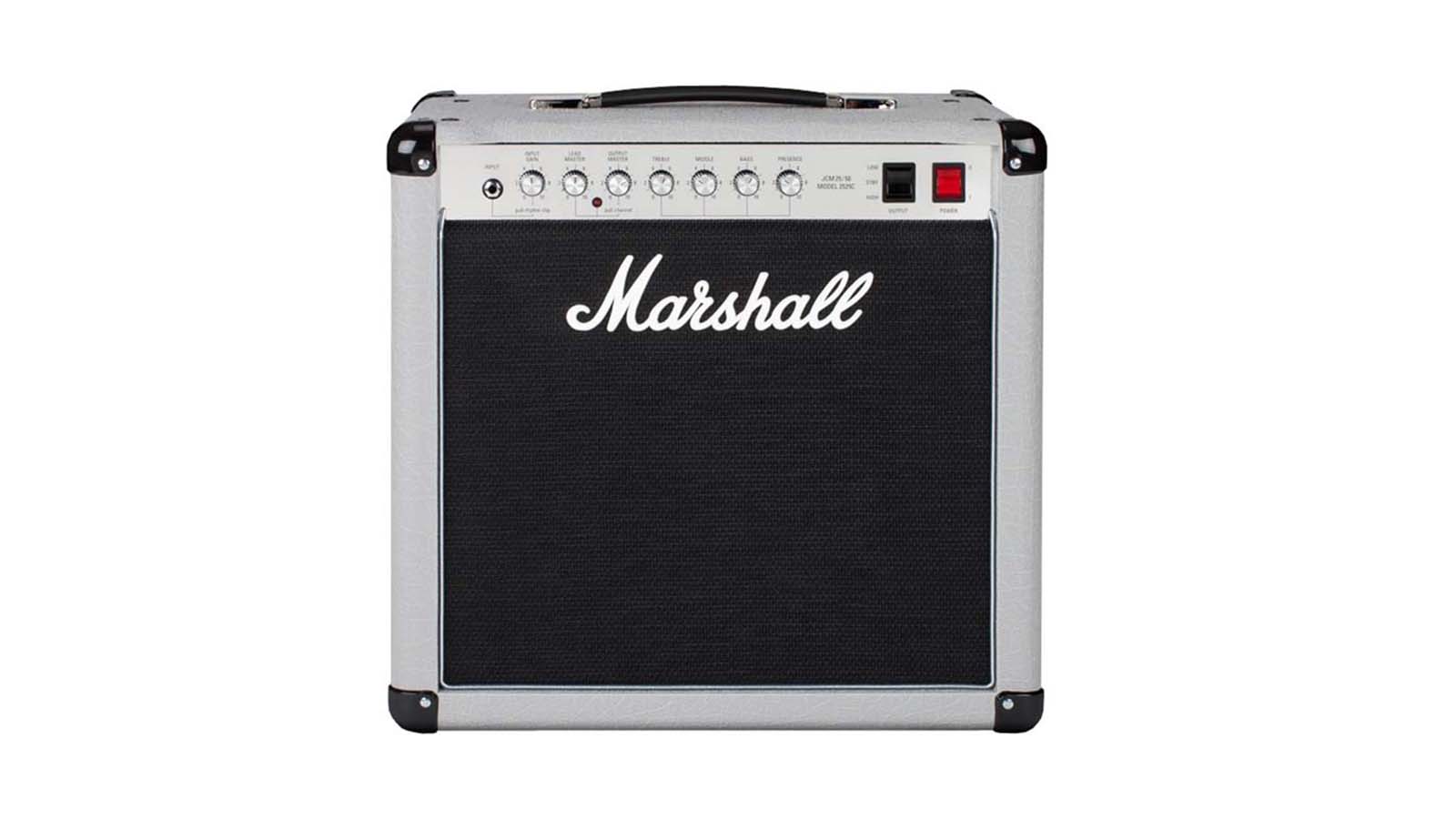
Slash's Appetite tones in a compact combo
Specifications
Price: $1,599/£625/€866
Type: Valve combo
Output: 20W switchable to 5W
Valves: 3x ECC83, 2 x EL34
Number of channels: 2
Speaker: 12" Celestion G12M Greenback
Weight: 19kg
Key Features: DI Output, Effects Loop, Footswitch
Reasons to buy
+Classic 1987 Marshall mojo +Ideal for Slash tones +Underrated cleans +Switchable power
Reasons to avoid
-No reverb
For many years, the Marshall Silver Jubilee was the amp that got away. Produced in limited numbers in 1987 to celebrate 50 years of Marshall, the Silver Jubilee is effectively a JCM800 that has been factory-modded to run a little hotter, and it was something of a minor tragedy that it never entered the always-in-production category its performance deserved.
This is the Appetite For Destruction tone, the Slash amplifier, and it's one of the most rocking amplifiers Marshall has ever assembled. The 2555X head offers it in its original 100w/50w format but the 2525C feels a little more manageable for today's player. It's still brutally loud in its full 20W mode, but switchable to 5W, it puts that iconic crunch within reach of the world's domesticated rock animals.
The gain structure on the Jubilee is something to behold but the Frusciante-esque cleans are not to be sniffed at either. It sounds good with pedals and will definitely stand up to most drummers. At 750-odd bucks, it represents excellent value. It's a serious rock and metal metal amp.
Read the full Marshall 2525C Silver Jubilee Combo review
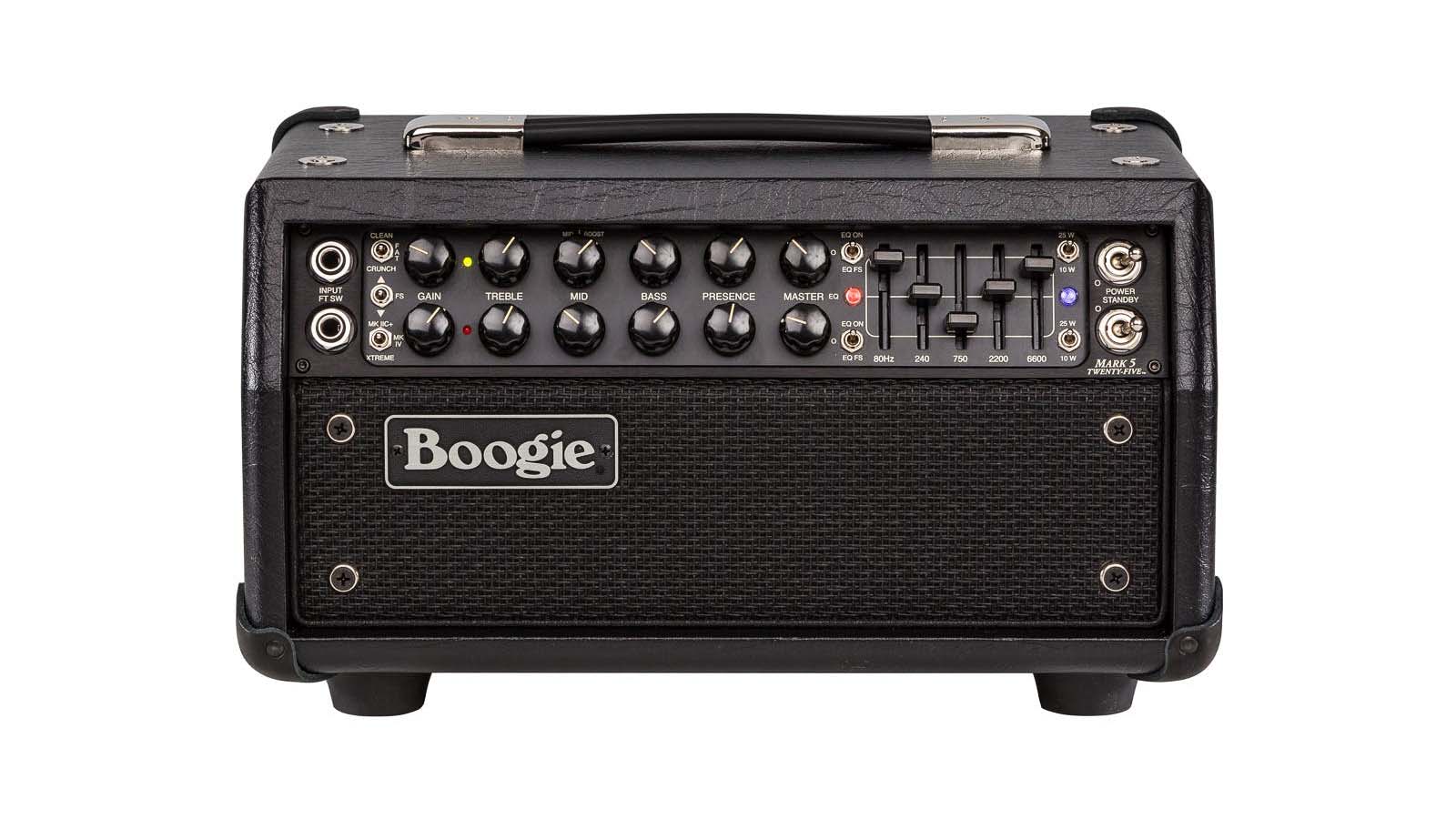
A feature-loaded low-wattage head with built-in speaker emulation
Specifications
Price: $1,599/£1,699/€1,899
Type: Tube head
Output: 25W, switchable down to 10W
Number of channels: 2 channels with 6 modes
Tubes: 2x EL84, 6x 12AX7
Weight: 7.5kg
Reasons to buy
+One of the best small amps on the market +12 possible sounds +Built-in CabClone speaker emulation
Reasons to avoid
-It's not cheap!
Based on Mesa's flagship Mark V, the Mark Five: 25 head is small, perfectly formed and typical of Mesa's superlative design and attention to detail. Two independent channels, each with three very different voice presets, combine with Mesa's iconic five-band graphic EQ for a choice of 12 sounds. You can footswitch between the channels, with the graphic on or off for quasi four-channel operation and preset 25 or 10 watts per channel.
One of the best features lives on the back panel: a CabClone speaker-emulated direct output, with a speaker defeat for silent recording or practice, using the built-in headphone socket. Despite the Mark Five: 25's long feature list, it's very easy to use and its tones are sensational.
The rhythm channel covers the shimmering clean tones of the modern Boogie and the fatter 'blackface'-inspired midrange of the fabled Mark I, while the Mark V crunch voice is so deep and three-dimensional you could record an entire album with it. The lead channel is equally inspiring, with a perfect rendition of the Mark IIC's overdrive tone (arguably the most coveted Boogie sound), along with more modern distortion effects that sound unbelievably good when tweaked with the graphic.
Read the full Mesa/Boogie Mark Five: 25 review
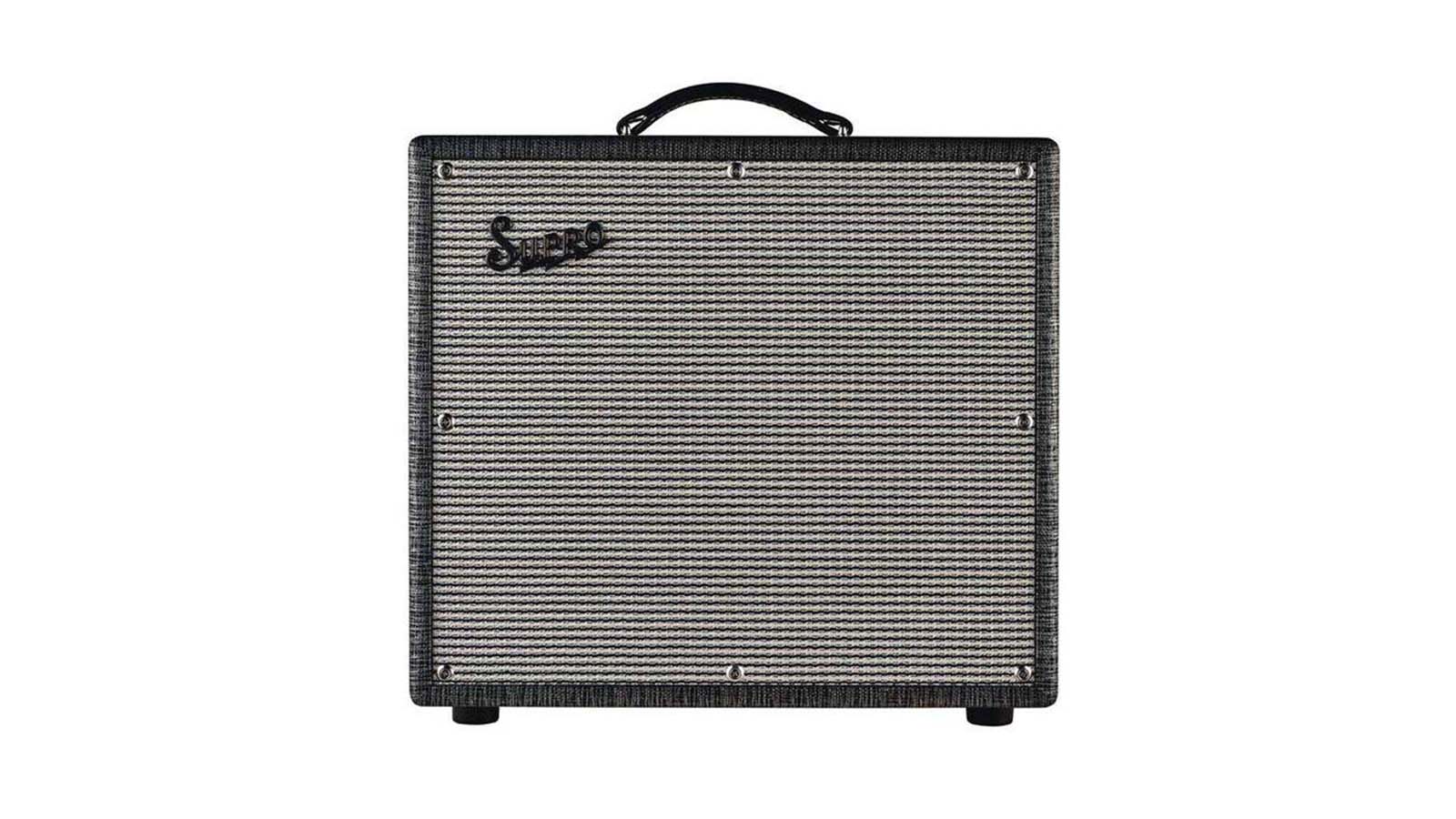
A vintage-vibe combo with hex appeal
Specifications
Price: $1,599/£1,175/€1,699
Type: Valve combo
Output: 25W at 4ohms
Valves: 8x 12AX7EH preamp valves, 4x 6973 power amp valves
Number of channels: 2
Speaker: 12" Supro BD12
Weight: 17.9kg
Key Features: Valve-driven tremolo, valve-driven 6-spring reverb, master volume, linked channels
Reasons to buy
+It's a very cool, portable build +Incredible classic rock and blues tones +Lush reverb and tremolo +Very giggable volume
Reasons to avoid
-It's kind of pricey
Lenny Kravitz was involved in the design of the 169RT Black Magick Reverb, and at his behest there is treble, there is reverb, and there is master volume. But, still, and Lenny would forgive us, the guitarist we think of when we think of the Black Magick is Jimmy Page, with the original Black Magick a replica of his old Supro Coronado.
Those Led Zeppelin tones wouldn't just fall out of the box; you had to be generous with the volume, but with a master volume control and treble and bass replacing a master tone control, the 169RT Black Magick Reverb offers you a safer passage to those houses of the holy. Linking the channels opens up a new frontier in gain for this amp.
The tremolo has been improved, offering up to twice the rate of the original amps, while the valve-driven six-spring reverb allows for some subtle depth and space or a weekend's surfing depending on how you set it.
Read the full Supro 169RT Black Magick Reverb review
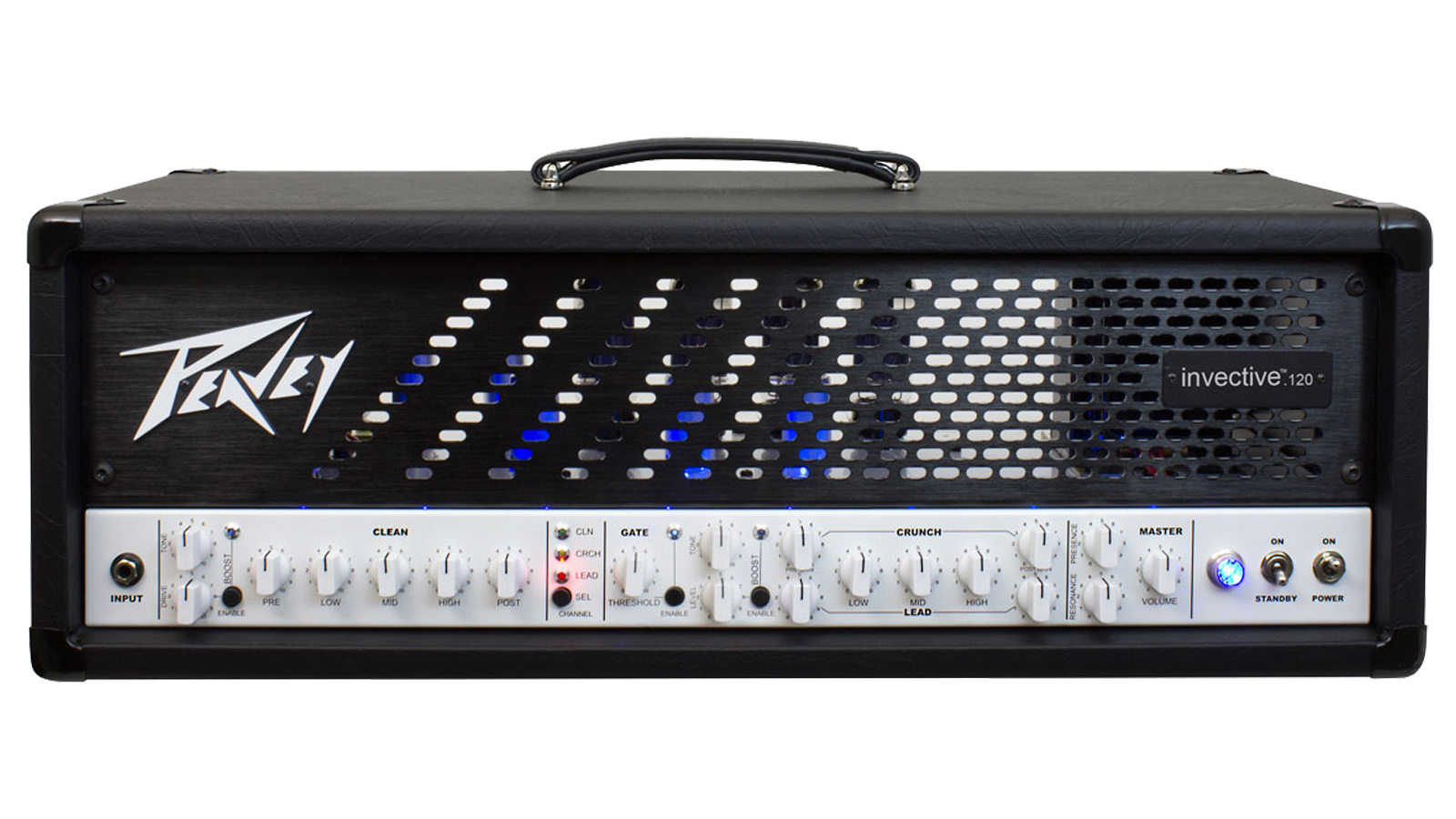
A modern metal beast
Specifications
Price: $1,799/£1,599/€1,730
Type: All-valve head
Output: 120W, switchable to 60W
Valves: 6x 12AX7, 4x 6L6
Number of channels: 3
Speaker: N/A
Weight: 22kg
Reasons to buy
+In-built noise gate highly effective +Switchable power is super useful +Clean channel is actually good
Reasons to avoid
-Still kinda pricey
The 6505 has been Peavey's ultimate modern metal amp to beat… until now.
Developed in partnership with Periphery's mastermind Misha Mansoor, the Invective 120 marries pure cleans with spleen-rupturing levels of gain, culminating in what could be the best metal amp we've seen for decades.
The Invective 120 is a fairly sophisticated affair, with MIDI capabilities, power switching, 2 in-built 9V power jacks and pre/post gain controls. These features, along with 3 channels of all-valve goodness, compliment the modern metal guitarist like a fine red wine compliments a posh French cheese.
Yeah, you could buy cheaper metal amps - but what's the point when the Invective has everything you need?
Read the full Peavey Invective 120 head review
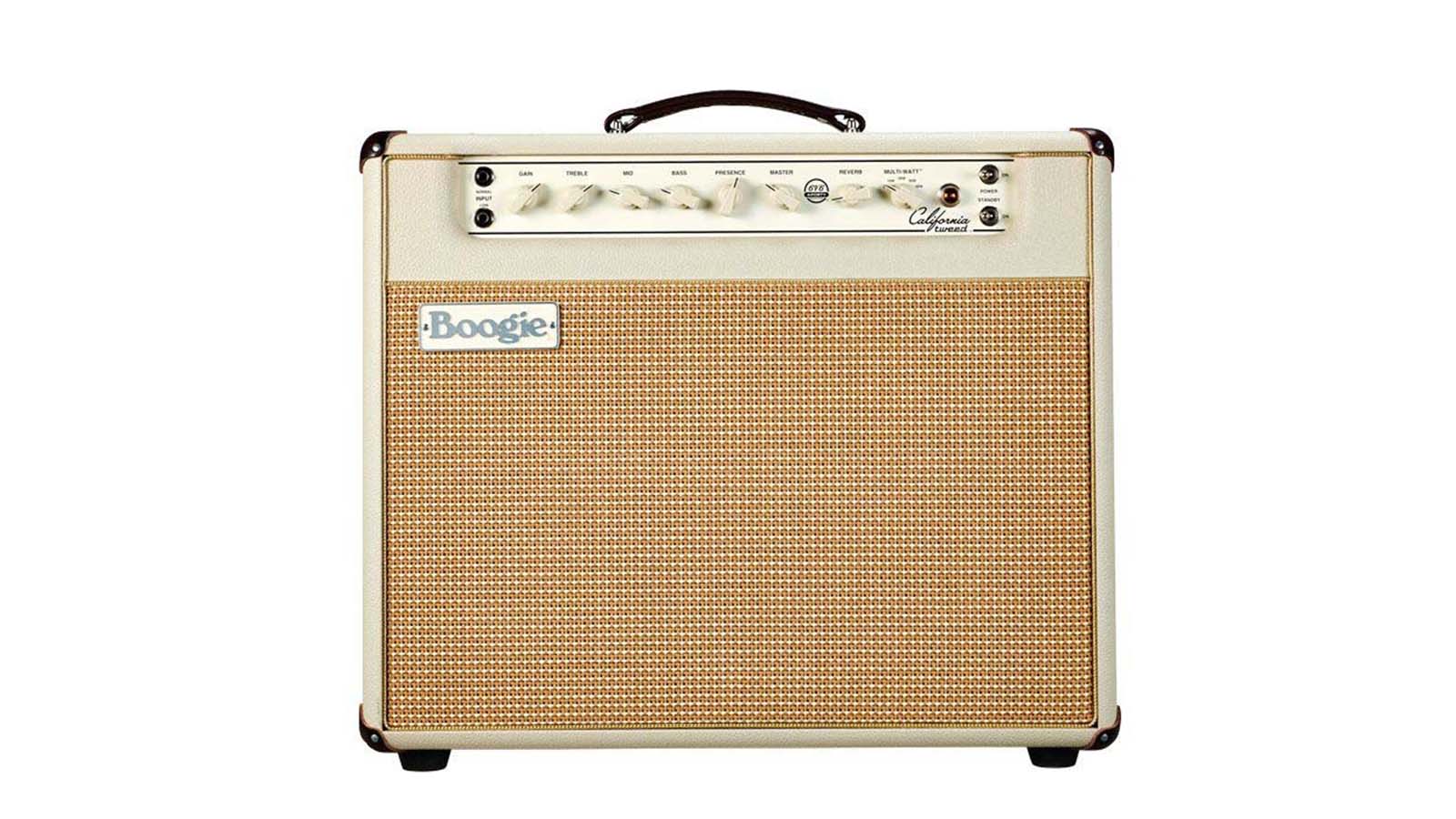
The ultimate combo for boutique Tweed tone
Specifications
Price: $1,899/£1,949/€2,269
Type: Valve combo
Output: 40W switchable to 20W, 10W, 2W
Valves: 5x 12AX7, 1x 12AT7 in preamp, 4x 6V6 in power amp
Number of channels: 1
Speaker: Jensen Blackbird Alnico
Weight: 22.2kg
Key Features: Dyna-Watt and Duo-Class tech offers 5 power, 2 operating-class, and 3 wiring options; valve-driven long-tank spring reverb, Baltic birch cabinet, dual inputs, buffered effects loop
Reasons to buy
+Ample headroom at 40W +Plays well in a variety of settings +Lush spring reverb +Impeccable build
Reasons to avoid
-It's a considerable investment
Some Mesa/Boogie amps are set up for the inveterate seekers, players who crave options and lots of them, so the California Tweed feels like a change of pace. It is a simple, single-channel affair, with high and low-gain inputs on a simple front panel with controls for gain, presence, reverb and master volume and a 3-band EQ, and it offers instant access to the finest Tweed tones you can buy, all sauced by the sweetest valve-driven spring reverb.
A five-way rotary dial lets you switch up the California Tweed's output, offering five different power outputs from a full 40 watts, where the headroom is gin clear, right down to 2 watts, where it is a little more squashed, ideal for the home, and full of Billy Gibbons' Texas crunch when you dime the gain.
The California Tweed is breathtaking, a throwback to a golden era in guitar amplification, but very much built for today. It'd make a fine pedal platform, with a series effects loop and a Jensen Blackbird Alnico that can handle a lot of volume. Exceptional all round.
Read the full Mesa/Boogie California Tweed review
Best guitar amps: Buying advice

Amplifiers have been around longer than the electric guitar. Early units were made as portable PA speaker systems around the start of the 20th century. Since the invention of the electric guitar, however, amplifiers designed specifically to enhance the signal from an electric guitar have come in all different shapes and sizes, with a massive range of different features available. Finding the best guitar amp for you will involve considering a few key points before buying. Let's take a look.
Tube amp vs solid state vs digital amp?
At first, all guitar amps were tube amps, that is until transistors were invented and utilised in amp technology - these are known as solid state amps. Despite solid state amps usually being lighter and cheaper, many players still prefer the tone and response that you get from a tube amp.
As you turn the volume up on a tube amp, you start to get a natural breakup to your sound - this is harmonic distortion which is perceived as the most organic type of overdrive. You'll also get some natural compression happening, plus they respond really well to your picking hand, allowing you to play with loads of dynamics. Most of the guitars you hear on rock, country, blues and many more records are likely to have been played through tube amps - they're still very much the gold standard for a lot of players.
Amps like the Boss Katana have some great clean sounds, alongside high gain tones, with everything else in between.
However, tube amps aren't always practical - if you want a practice amp for home use, then you probably won't be able to turn it up without your family or neighbours complaining. This is where solid state and digital amps can be useful - they will sound the same, regardless of the volume you're playing at. However, if you're playing in pretty big venues, then you'll get away with cranking your amp to really get those tubes singing.
Solid state amps also won't distort as you turn them up, so if you want a clean sound and want to be able to turn it up loud, then they can be a good choice. They also make a great platform for pedals. If you've got a distortion or overdrive pedal that you like the sound of, you can run those through your clean solid state amp and get a consistent sound everywhere you play.
Digital and modeling amps quite often have a bunch of different sounds built in, so they're great if you want versatility. Amps like the Boss Katana have some great clean sounds, alongside high gain tones, with everything else in between. You'll usually find effects built in too, saving you money on pedals. High-end digital amps like the Kemper have a range of sounds built in that are essentially digital snapshots of certain amps. This gives you authentic tube-like tone, in a digital package - the best of both worlds!
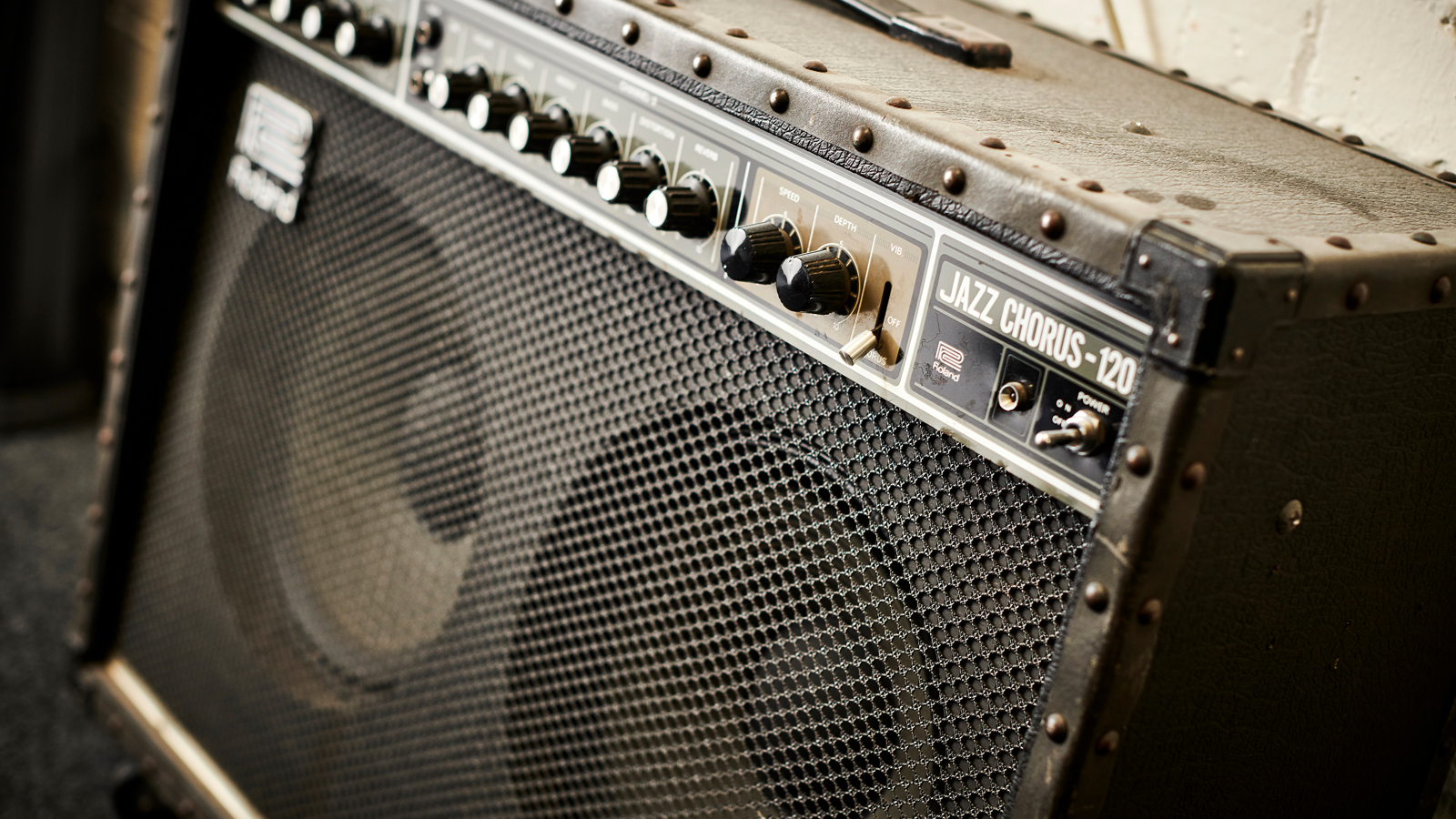
Head vs combo vs pedal amp: which format is right for you?
When buying an amp, it's worth thinking about whether you want a combo, or a head. A combo is all parts of your amp, plus the speaker - everything's in one box, as it were. A head is the preamp and power amp section, and requires an external speaker, or cab, for you to actually hear anything. Heads can be useful if you're gigging, as many venues have a house cab, so you can just turn up with your guitar and head.
The question of head versus combo has been complicated in recent years by the dawn of the pedalboard amp – a guitar amp that's housed in an enclosure the size of a small multi-effects unit, yet often powerful enough to replace your amp head.
The benefits are obvious with a pedalboard amp. Throw it in your backpack and you're ready to go. They can be super versatile too, with the likes of the four-channel format of BluGuitar's Amp 1 offering a lot of tones for its price and footprint.
But this all depends on how important portability really is to you. The traditional amplifier head, which you would then hook up to an external speaker cabinet, remains a hugely appealing prospect, particularly if you have a speaker cabinet ready to go at home, and if you regularly pay for rehearsal space at a studio they're sure to have a cabinet ready and waiting.
On the flipside, the combo is an amplifier and speaker all in one neat little box. Size definitely matters here. A small combo with a single 10-inch speaker can still be a significant burden to cart around, but for many of us, the convenience of having an all-in-one setup is just too great - especially if it's mostly going to be kept at home.
How much power do you need?
Think about wattage too - if you just want to play at home, then a low wattage amp will do fine. If you're going down the tube amp route, go for as low a wattage as possible - that way you can crank the preamp section, and it won't deafen everyone! Likewise with solid state and digital amps, whilst the tone won't vary too much depending on the volume, there's no point paying for more than you need.
If you're looking to play some gigs, then you'll want to go for something with a bit more power. It's worth noting here that the perceived volume of tube amps and solid state/digital amps is not the same - that is, usually, a 20W tube amp will be louder than a 20W solid state amp. 15/20W is a fairly sweet spot for tube amps if you're playing small to medium gigs as you can push them nicely into overdrive whilst keeping on the good side of the sound technician. For solid state and digital amps, you'll probably want to look around 100W to really be heard at shows.
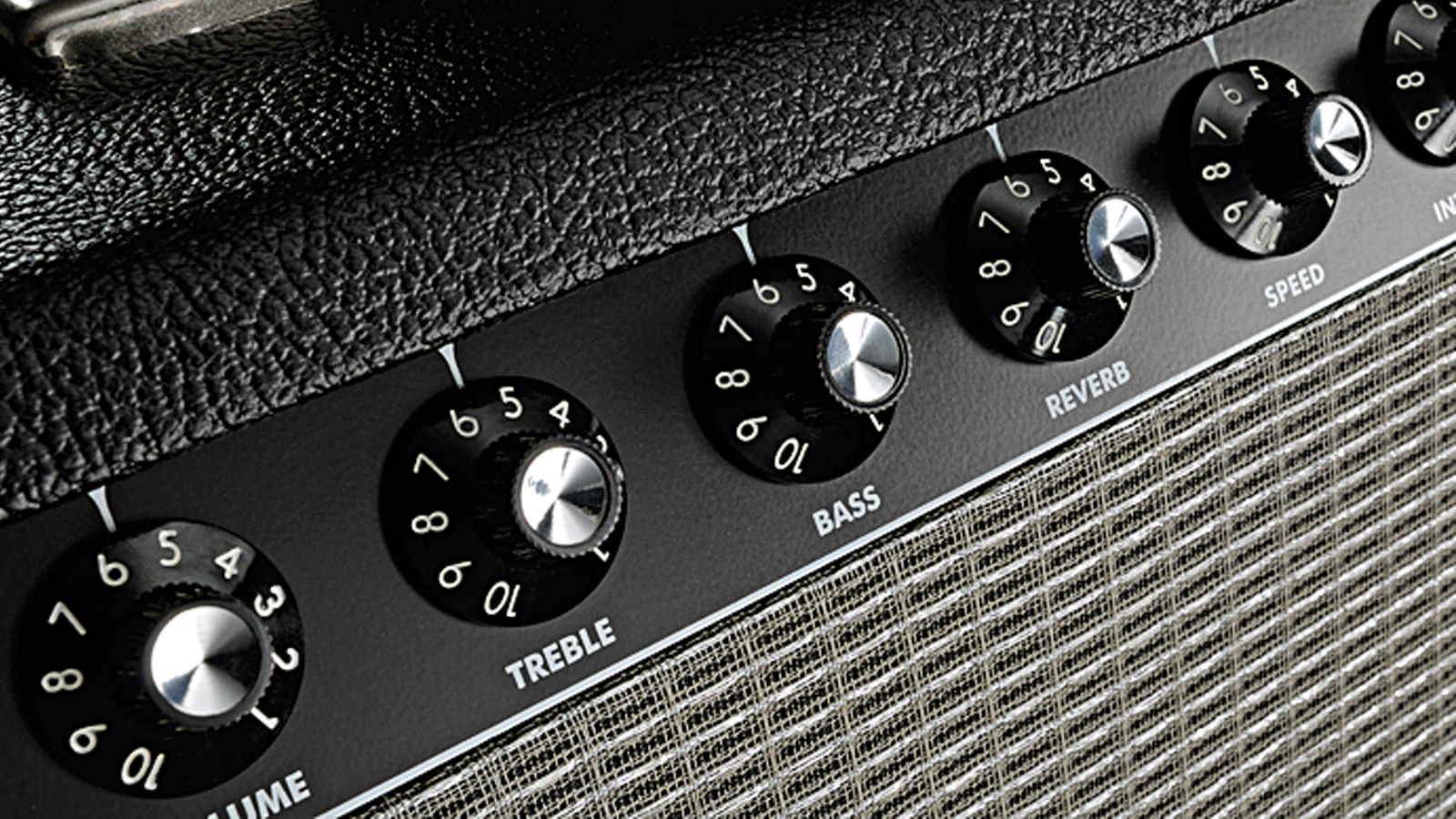
Which amp brands are best?
Fender and Vox are renowned for their clean sounds, though you'll get some cool overdriven tones out of them too. If you're more of a metalhead, then Mesa Boogie, Victory, Hughes & Kettner and Peavey all have you covered - though lots of metal players are going digital these days, especially with the Kemper. You also can't go wrong with a Marshall - the JCM800 is a classic for a reason, particularly for straight up rock players.
How much should I spend on a guitar amp?
Price is also a consideration - all of the amps in this guide are a good choice, but if you're a beginner then you don't really need to spend loads on a bedroom amp - you can get something cool for well under $/£500. If you're looking to step up to a professional rig, whether tube or digital, then for top-notch tone and reliability, you're probably going to be looking at spending up to $/£1000 - maybe more.
- Why not pair your new amp with one of the best cheap electric guitars
- Practice more with the best guitar amp headphones
Source: https://www.musicradar.com/news/the-best-guitar-amps-for-beginners-and-experts







Tidak ada komentar:
Posting Komentar